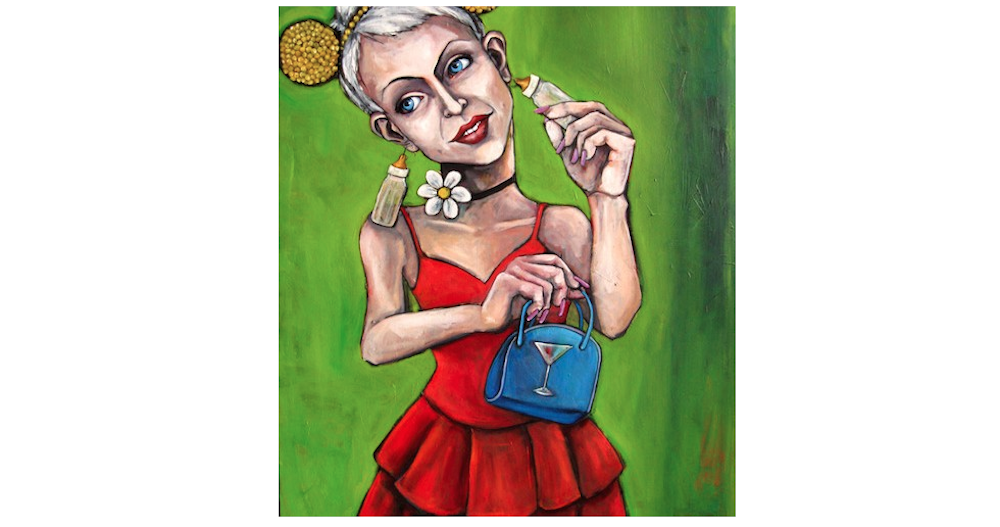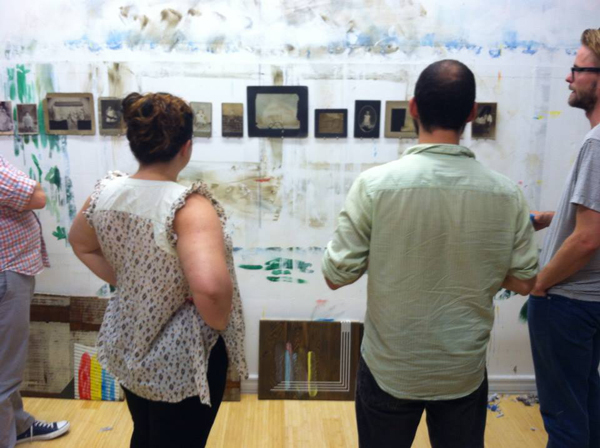For this installment of “Artists Work,” a regular feature profiling artists with creative day jobs, Lu Zhang interviews Chris Owen.
Chris Owen graduated with a BFA from the Maryland Institute College of Art in 2007. During his time in Baltimore, Chris organized group exhibitions in an apartment gallery he founded called “Home on the Range.” In addition to making paintings, drawings, and sculptures, Chris has helped produce, choreograph, and film various performances, shadow puppetry, plays, music videos, and variety shows.
After five years in Baltimore, Chris moved back to his home state of Kentucky to focus on work and build small communities of friends and artists. During that time, he also traveled throughout Kentucky, North Carolina, Virginia, and Maryland, following work, creative opportunities, and art. In 2013, Chris returned to Maryland to focus more on his own creative endeavors and engage with the blossoming art communities of Baltimore. Currently, Chris works as a graphic designer of handmade Tibetan rugs, organizes and curates arts events for his native Kentucky (Cowan Creek Music School, John Haywood, KFTC/ABF, etc), organizes “Group Crits” with Baltimore artists and musicians, and works with the artist/activist group, FORCE: Upsetting Rape Culture.
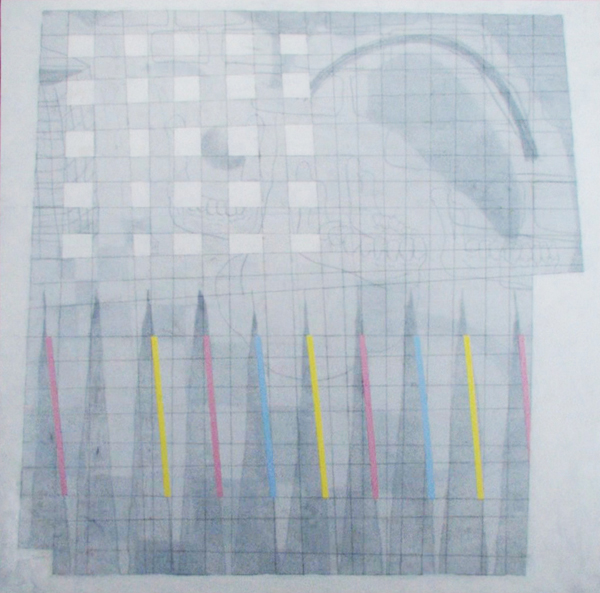
LZ: Tell me about your work currently on view at The Windup Space.
CO: Things Contained is a body of work that I’ve been hammering away at since I moved back to Baltimore. The city and the materials that I find on walks have definitely influenced my aesthetic and formal choices in representing organization, chaos, reification, and construction. My conceptual focus has been on the creative construction of reality — how I can experience so many stimuli and ideologies (contrasting and confirming) in a single moment and how can I organize that experience into a (in)stable entity that is me. This work is an effort to pull together these contrasting events and concepts that I have experienced, trying to make sense of my life. Building, erasing, layering, covering up, giving up control, exercising extreme control. All of these actions in making the pieces are extremely loaded when talking about art or creative individuality.
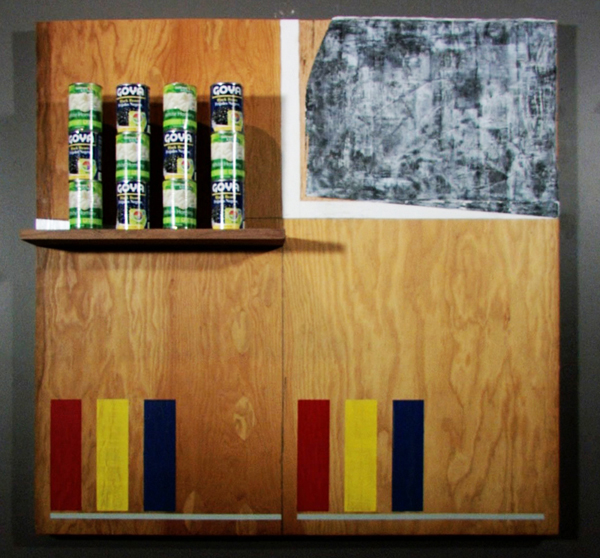
Found wood has also influenced my thinking, it’s a very complicated material with natural beauty and history. When I say history, I mean it’s historical relationship to humans as a material for building or as a fuel for burning and also the history of the material itself, represented by the tree rings, and the designs that they create when the wood is cut, sanded, or carved into. In my drawings I’ve been attempting to build a similar kind of complexity that exists in wood. But, instead of the tree rings and natural designs, I’ve been building my own heavily layered networks of personal imagery and imagination.
More readily available non-art objects and materials, mostly packaged food or consumable objects and the design that goes into their representation in the world, have also made their way into my works. How do these objects live? What do they say? What happens when you start assuming everything around you is loaded with meaning or worth mulling over, as one does with any work of art? And the arena of art and art viewing seems to be the perfect place to investigate objects.
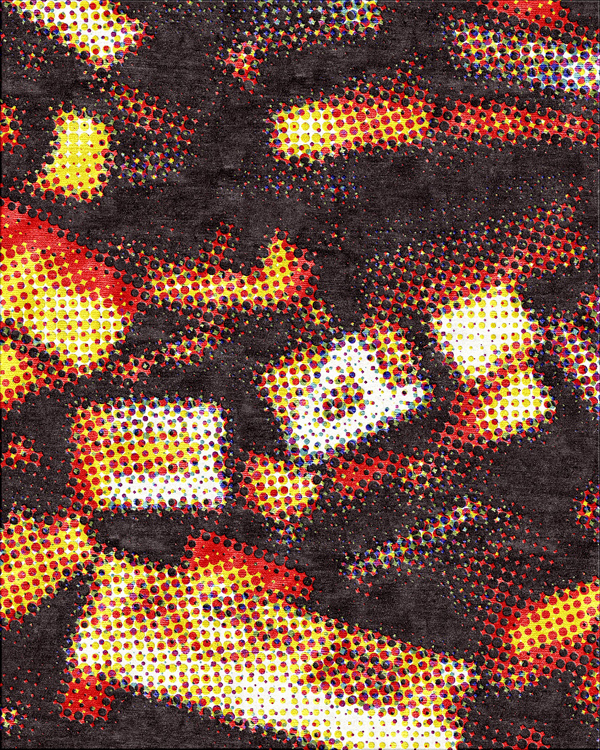
LZ: You work for a wholesaler of bespoke Tibetan rugs, tell me more about your job.
CO: My day job is custom designing luxury rugs for high-end clients. We do mostly modern design and some quasi-traditional things – but I tend to push clients to either true traditional designs or some really far out funky rugs – including designs with prehistoric fossilized wolf skulls, patterns made from photographs of forests, piles of skeletons, oceans, genitals and heavily edited or destroyed traditional designs. But, basically I am the creative liaison between the wealthiest class of patrons and the poorest class of producers. In that sense, it can be challenging, but it is also an opportunity to make some truly beautiful objects. Collaborating and being in touch with Nepalese, Indian, and Tibetan people every day is quite an amazing experience. And seeing such high quality and beautiful items coming from a third world country, after countless revisions, communications, mishaps, government protests/shutdowns – is astounding.
LZ: As artists we also talk about the relationship between labor and money. How has this affected your studio work?
CO: I think those concepts actually started affecting my work when I was building architectural models. We were working for some of the largest development firms in the world helping them organize and visualize how to creative the most efficient and effective consumer-based landscape and environment. My concerns weren’t really about Occupy based ideologies of the relationships between wealth and poverty. But they are more specifically focused on how one class influences another class via objects of consumption and the creation of environments. A specific example of this would be something like – working on the models allowed me to see how sidewalks were designed to flow people, most quickly and smoothly, into the areas of maximum consumption. My mind was pretty blown at that point, that something so innocuous as a square of concrete and paint could be so influential – for better or worse. This opened me up to look at my environment and objects surrounding my life as things that were built to have influence, to have lives of their own, to have purposes other than what they are used for.
As far as the actual work I’m doing now, it’s not so loaded or charged. It is the position that I am in that seems to hold the weight. In my role, I communicate with both clients with the resources to purchase hand-knotted rugs and the makers using traditional methods of production, living in Nepal. Which inevitably means two very different conversations in terms of context and economic situations.
But this position is not very new. I recently saw an exhibition at the MET which displayed items designed in Thailand, hand-made in India and sold to French colonials in Vietnam. This is a perfect example of an interconnected, post-modern, society where geography, culture and tradition have all lost any real weight under the influence of commodity consumption. (http://www.metmuseum.org/exhibitions/listings/2013/interwoven-globe)
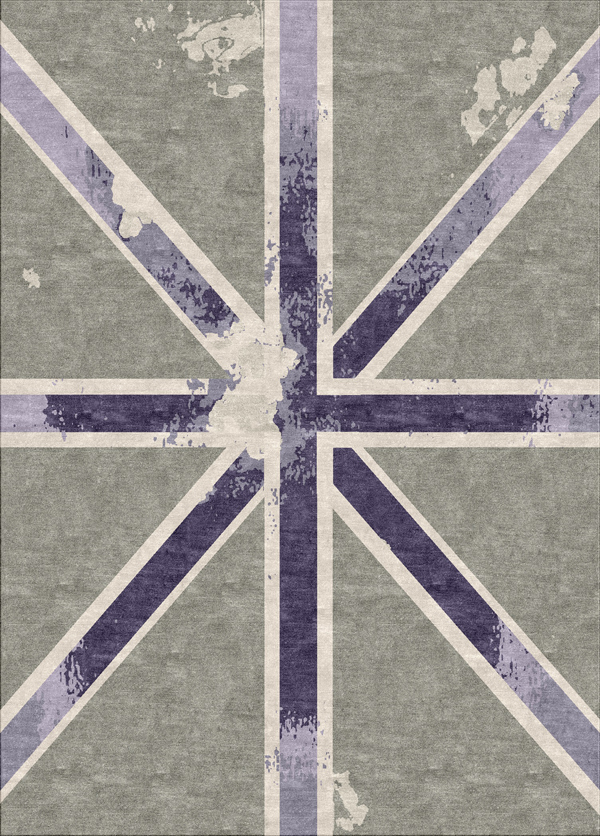
LZ: What does a typical day at your job look like?
I have a nice cup of coffee while I go over the emails that I’ve received from Nepal over the evening (always expecting to get the “No work will be done today because the government has shut down all activity, or power, or something in Nepal). Then I go on to email my clients with updates on the status of their objects. If there is some design to do, I get on it. If there is paperwork to do, it gets done. During my lunch I like to read some art blogs, collect images and make my own personal designs. Then back to either editing designs or more paperwork (There is endless paperwork!)
LZ: How did you start working there?
I had been traveling quite a bit (some might call it homelessness, but I was never sleeping on the streets or anything – I’ve got a wonderful group of friends with soft couches), and decided that I needed to find a stable place to start making the work that I was thinking about. And, I also wanted to get back to Baltimore to reconnect and explore the possibilities. So I got on MICA’s career website, found this posting for a Tibetan rug design job and went for it. I got a call, that same evening, to come to Baltimore for an interview in the morning (I was in western North Carolina at that time) and drove all night to get to the interview in the morning. I got there, a little haggard, I showed them what I had been up to and what I could do, we laughed a little about the weirdness of my resume and then we began working together.

LZ: You’ve had a lot of different jobs. Are there other past jobs besides model making that’s had an impact on your work?
CO: Working for Amazon.com in one of their giant fulfillment warehouses was pretty influential on my thoughts of objects, consumption and the influence of the Internet. I was the physical manifestation of your virtual shopping cart, running back and forth through 27 miles of aisles packed to the brim with objects that had no discernible organization. The notion that I was on the other side of the internet was very strange for me, it made me feel a real inhuman separation that I can’t really explain.
LZ: More generally speaking, how have you come to work at your previous jobs?
CO: Either out of necessity, naivety or luck. I pushed my way into model making. I was only supposed to be a temp, but I made it clear that I was full time by coming in and staying. But, something like working at Subway, I did that because I had no money to support what I was doing. Supporting my art and other projects has been the sole purpose for my day jobs since I graduated back in 2007.
LZ: What do you really enjoy or dislike about your job?
CO: The best part would definitely be split between designing my own pieces without the constraints of a picky designer or a client that just wants colors moved around and the other part, playing with Minerva, our house pit bull. The worst part is most definitely all the paperwork and administrative tasks.

LZ: Why did you decide to come back to Baltimore?
CO: It was helpful in my move that I had work to come to, but the thing that made me think that designing handmade carpets was ok, was that I was moving back to a city where I had many creative friends and artists that I respected. I was really excited about reconnecting with them, the city, and exploring new possibilities and experiences.
LZ: What’s your view of the art scene / community here?
CO: It’s wonderful! Everyone is welcoming, supportive, interested and interesting. There is so much going on. People are pushing bounds in just about every realm of creativity that I am aware of. I love when I find myself experiencing new realms and strangeness. I have some weird feelings toward the Arts Districts and the blatant gentrification that is going on in the city, but I don’t really consider that to be part of the community, which is made up of amazing creative individuals. Art Districts have offered up great support for the budding businesses and operations that have worked with it – that’s great. I guess if I could say anything to the body-creative of Baltimore, I’d say, “Keep it the fuck up! You’ve got this! You’re beautiful!”
LZ: Tell me about these group gatherings with artists that you organize in your house. What was the motivation?
CO: This is a project that my partner Anna and I began when we were settling into Baltimore. Our original motivations were to create a creative and critical community that could either help individual artists communicate their work, to create a place where collaborative projects could be born from, and a place to introduce artists, musicians, writers, and other creatives with each other. We live out east by Johns Hopkins Hospital and it’s hard to feel in-touch when no one is around. So we, thought, “Hey, since there isn’t any one here, why not just invite the people who we respect, love, and care about so we can talk about our work, share our interests, eat good food and have a couple drinks.” As we spoke with other artists, we found that many folks felt the same way and really wanted to share their stuff and talk about other work.
LZ: What’s the response been?
CO: It’s been really amazing! The conversations usually start out slow as people get to know each other, but as the food starts to disappear, work is shown or presented, it gets really good. But it’s still in its infancy and we’re working things out. We have only had two meetings, thus far, and are organizing more for the very recent future. We’re looking to get more people who are not just making art, here in Baltimore and beyond, but also people who are writing about art, curating and organizing events in and with the city. It seems like a good idea, and a natural progression, to get those who make and those who get that which is made out, together for dinner. You should definitely come to the next one, Lu.
LZ: I’ll be there, just let me know when! What other projects are you working on now?
CO: Right now, I’m working on a handful of pieces to go up in a group show coming up in March, I’m producing/curating a show at the Windup Space for the Kentucky artist and musician, John Haywood (Art, Music, Square-Dancing!), organizing some art events for a traditional music school in south eastern Kentucky (Cowan Creek Music School), and we’re hosting a handful of events at our house including some concerts, art exhibitions and a polka party this spring. Yes, I just said Polka Party, your mind is blown.

Things Contained is on view at the Windup Space (12 W. North Ave) until the end of February. A closing reception will take place on February 28, from 6 to 8 PM.
All images courtesy of Chris Owen.
* Author Lu Zhang is a Baltimore-based artist and a Managing Editor at Bmoreart.
